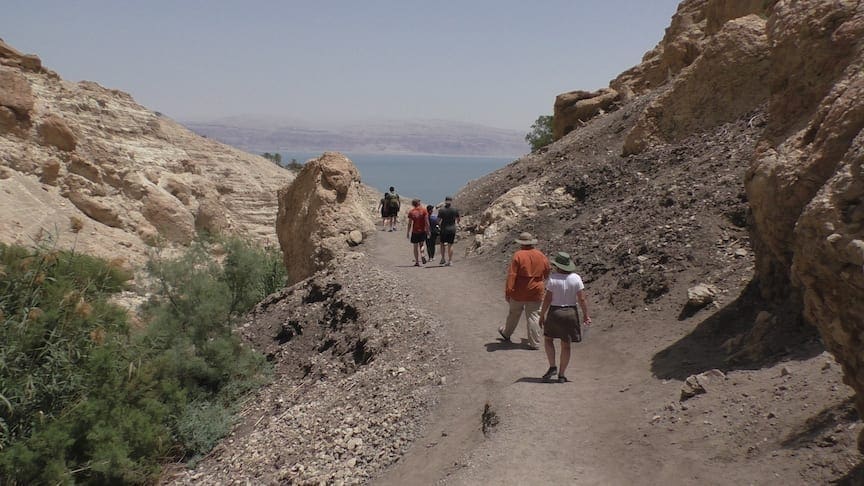For travelers with Campbell University Divinity School and Nurturing Faith Experiences, Saturday was a day to experience the western side of the Dead Sea, including the sea itself.
We began by driving from Jerusalem, at 2400 feet in elevation, to the Dead Sea, at about 1300 feet below sea level, the lowest point on earth. Our first stop was the desert fortress at Masada, where we climbed back to sea level via a cable car and explored the flat-topped mountain where Herod the Great had built a fortress as a potential hide-out from Cleopatra, whom he feared.
Herod never needed it for that, and it was occupied mainly by Roman soldiers until a group of Jewish zealots took over the place during the Jewish revolt that began in 66 CE. They held out there for seven years before Roman legions retook the fortress after a six-month siege, building a massive ramp that allowed them to breach the wall one evening. Before they could rush in the next morning, however, the Jews killed themselves rather than submit to Romans. Josephus claimed that more than 900 died, with only two women and three children remaining alive.

Richard Hammer, like the rest of us, enjoyed watching a small herd of ibex wandering by while we sang “As the deer …”
Forty-five minutes north of Masada is En Gedi, a desert oasis where David famously hid out with 400 supporters when Saul came looking for him.
When Saul went into a cave to relieve himself, he happened to choose the cave where David was hiding, according to the story in 1 Samuel 24. David managed to cut off a piece of Saul’s robe without Saul noticing, and later showed it to him, proving that he could have killed him.
Another 20 minutes north of En Gedi is Qumran, where the Dead Sea Scrolls were found. We enjoyed lunch there, visited the remains of a small Essene community that was probably responsible for writing and hiding the scrolls, and viewed two of the primary caves where they were found.
We ended the day with a chance to get up close and personal with the Dead Sea, which is ten times more salty than the ocean, and so bouyant that one can easily float in a foot of water. Most of our group took advantage of the opportunity, picking up large crystals of salt from the bottom or slathering themselves with mud, which is supposed to be good for the skin. Afterward, they were anxious to hit the shower, as the Dead Sea water leaves the skin feeling very oily.
We returned to the cooler climate of Jerusalem tired but ready for the next day. Sunday, appropriately, we visit the Old City and several places Jesus would have been.








